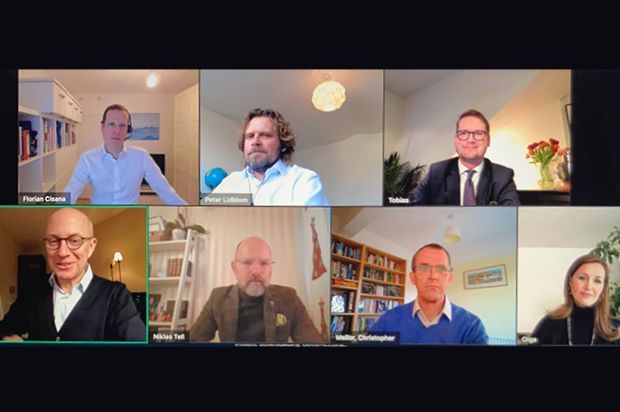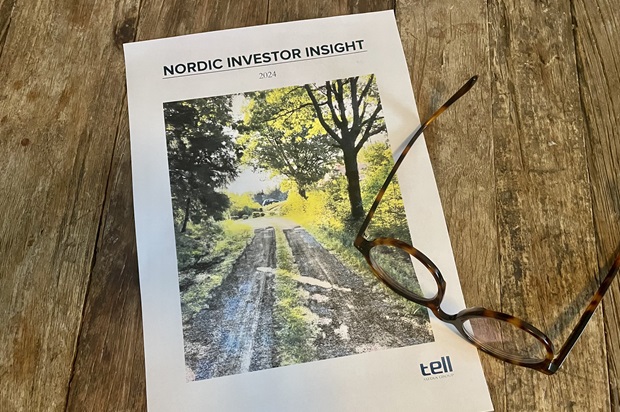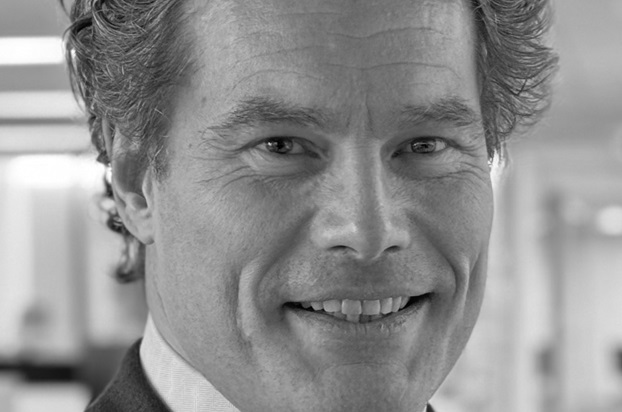
ESG - important driver for ETF flows in 2020
At the end of last year, Tell Media Group gathered DWS, HSBC Asset Management, Invesco, JPMorgan Asset Management, State Street SPDR ETFs and UBS Asset Management to discuss trends within the ETF industry. Tell Media Group founder Niklas Tell moderated the discussion.
The ETF roundtable kicked off with Niklas Tell asking the participants to look back at and share their thoughts on some of the key developments over the past 12 months.
FLORIAN CISANA: “I assume that everyone has seen similar trends in the market due to the significant impact of Covid in Q1 and the following months. We saw large outflows, especially from market-cap ETFs, in the first quarter, which hasn’t really recovered since. We have, on the other hand, seen inflows into fixed income ETFs, especially after the Fed made its announcement that it’s buying ETFs on US corporates and that continued in the second quarter. In the second quarter, we also saw investors starting to focus on their ESG-related project again, something that was halted earlier in the year due to the market turbulence, basically analysing how they want to integrate this change in their portfolios. This resulted in increased inflows into equity and fixed income ESG ETFs from the second to the fourth quarter. By end of the year, we’ve seen that ESG ETFs have attracted more net inflows than traditional ETFs. Another trend that picked up in the second half of the year was some big factor rotations and also increased focus on certain thematic ETFs.”
PETER LIDBLOM: “I know that we’re going to discuss ESG separately but I think it’s worth picking up on what Florian said on investors taking a pause in the second quarter. I think what we actually saw was more of a shift. When investors started buying equities again, they moved away from the traditional benchmark and into our ESG versions instead. Also, when it comes to fixed income I think the Covid situation, although terrible in every way, put the spotlight on fixed income ETFs and how they function. There were a lot of misunderstandings in the market about what was happening with fixed income ETFs in the spring. They were trading at a discount to the NAV and that provided us with a lot of opportunities to speak to clients and explain that this was a good thing: that the ETF is actually the price discovery tool that fixed income investors need.”
CHRISTOPHER MELLOR: “Obviously, ESG was a big topic this year and we can clearly see that on flow statistics. Another key area where we saw a lot of interest this year was thematics, especially after the sell-off in March and the concerns about cyclical growth. That really focused investors’ minds on the areas where they potentially could get secular long-term growth stories. So we saw significant flows into things like biotech and blockchain related ETF products and also into things like the Nasdaq 100, which provides exposure to the big tech names that should be well positioned for the Covid working environment. The final thing I would like to add is the increased interest in synthetic replication. This was a big subject in 2019 and we saw massive inflows into synthetic products on certain key US benchmarks such as S&P 500 and MSCI USA.”
ANTOINE LESNÉ: “Obviously, we all work with the same transparent data, which is a nice feature of ETFs versus other vehicles, so I very much agree with what has been said about ESG and fixed income. With regards to fixed income, it seems as if 2020 will be the second best year in terms of inflows in Europe and we can probably state that 2020 marks a turning point in the acceptance of fixed income ETFs as an instrument by investors. Another important area of flows has been gold, both in Europe and in the US. It’s a tool that has been used by investors to hedge against the potential consequences of the monetary policy, which could lead to inflation, as well as a defensive play.”
OLGA DE TAPIA: “I just wanted to add some data on the ESG growth we’re all talking about. In March and April, we saw outflows from market cap ETFs of about USD 7.7 billion but at the same time inflows into sustainable ETFs of some USD 13 billion. In the third quarter, the European sustainable market grew by some 10 per cent, according to data from Morningstar. We now have almost USD 900 billion of assets under management in sustainable ETFs, which is a spectacular growth. Also, it’s not only institutional assets but retail clients as well. We’ve launched a sustainable range of funds targeting retail clients. At first, we didn’t see much interest but after the pandemic hit in March, the flows have been fantastic.”
TOBIAS NILSSON: “We spoke about ESG and fixed income last year and 2020 has essentially been the year when that really materialised. ESG ETFs saw more inflows that non-ESG ETFs and this spring was the first real stress test for fixed income ETFs. To Peter’s point, I think the price discovery mechanism provided by ETFs is more recognised today and if anything, it shines a light on other vehicles. Investors also voted with their feet. When clients needed to exit in March, they did so in record volumes via fixed income ETFs and when the markets turned around, we again saw huge inflows.”
The roundtable discussion was published in the Nordic ETF Trends 2020 supplement (distributed with issue 01 of Nordic Fund Selection Journal). A PDF of the complete story can be found here.
//Participants
• CHRISTOPHER MELLOR: Head of EMEA ETF equity & commodity product management, Invesco
• TOBIAS NILSSON: Head of ETF distribution, JPMorgan Asset Management
• FLORIAN CISANA: Head UBS passive & ETF specialist sales strategic markets, UBS
• OLGA DE TAPIA: Global head of ETF sales, HSBC Asset Management
• PETER LIDBLOM: Head of passive products distribution, Nordic region, DWS Xtrackers
• ANTOINE LESNÉ: Head of ETF strategy & research for EMEA, State Street SPDR ETFs



